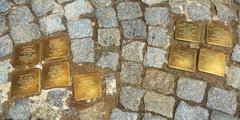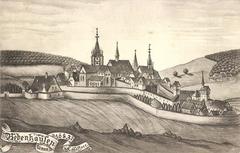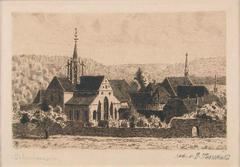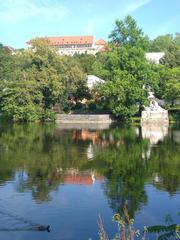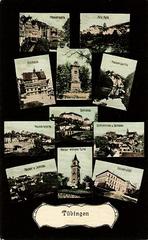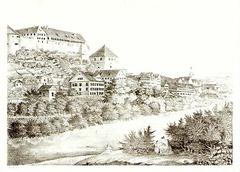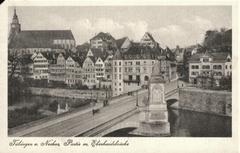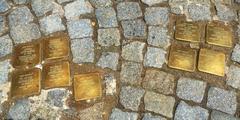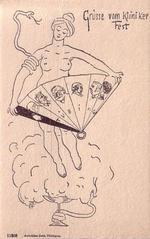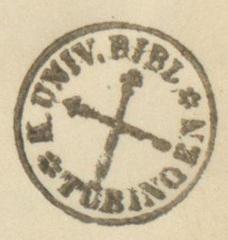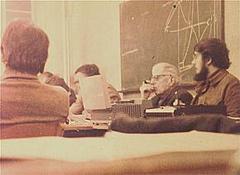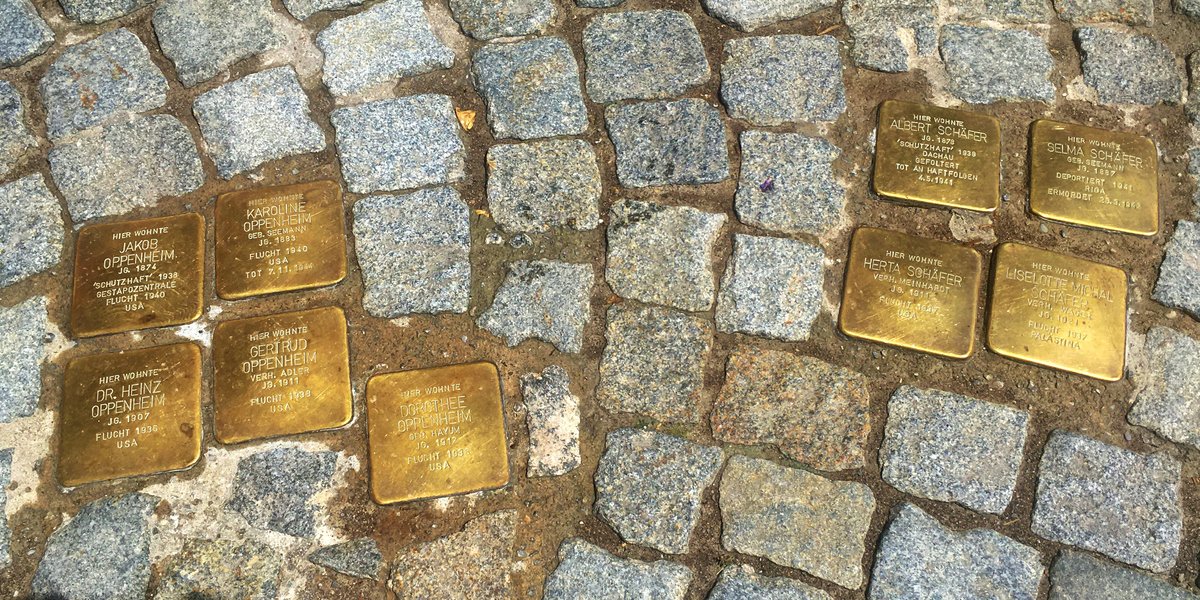
Stolperstein Karoline Oppenheim: Visiting Hours, Tickets, and Tübingen Historical Sites Guide
Date: 14/06/2025
Introduction to the Stolperstein Dedicated to Karoline Oppenheim in Tübingen
The Stolperstein commemorating Karoline Oppenheim in Tübingen, Germany, stands as a powerful and personal form of Holocaust remembrance woven into the life of this historic university town. The Stolpersteine project, initiated by German artist Gunter Demnig in the 1990s, has become the world’s largest decentralized memorial to victims of National Socialism, with over 90,000 stones placed across Europe. These brass plaques, each measuring 10 x 10 cm, are installed in the pavement before the last freely chosen residences of those persecuted or murdered by the Nazi regime, transforming everyday sidewalks into spaces of reflection and memory (stolpersteine.eu; Wikipedia Stolpersteine).
Tübingen has participated in this project since 2011, with over 140 Stolpersteine honoring former residents, many from the Jewish community, such as the Oppenheim family. The Stolperstein for Karoline Oppenheim, located at the corner of Holzmarkt and Neue Straße, is part of a family memorial that tells a story of persecution, resilience, and remembrance. Karoline, active in her community, was forced to emigrate to the USA in 1940 and died in Philadelphia in 1944. Her story is emblematic of the fates that these stones keep alive (Verein Jüdische Kultur Tübingen; Wikiwand Tübingen Stolpersteine).
This guide explores the history and significance of the Stolperstein project in Tübingen, focusing on Karoline Oppenheim’s memorial. It includes practical visitor information—such as location, accessibility, visiting hours, etiquette—as well as details on educational initiatives, community engagement, commemorative events, and nearby cultural attractions. Whether you are a local resident, a traveler, or a history enthusiast, this resource will support a thoughtful and meaningful visit (Bonhoeffer-Gemeinde PDF; Germany.info).
Contents Overview
- Origins and Purpose of the Stolpersteine Project
- Stolpersteine in Tübingen: Local Context and Locations
- The Oppenheim Family and Their Stolperstein
- Artistic and Memorial Significance
- Educational Value and Community Engagement
- Practical Visitor Information
- Special Events and Commemorations
- Accessibility and Nearby Attractions
- Frequently Asked Questions (FAQ)
- Conclusion and Call to Action
- Sources and Further Information
Origins and Purpose of the Stolpersteine Project
The Stolpersteine (“stumbling stones”) project was started by artist Gunter Demnig in the mid-1990s to honor the memory of individuals persecuted and murdered by the Nazis. Each Stolperstein is a small, square brass-plated stone (10 x 10 cm), embedded in the sidewalk before the last freely chosen residence of a victim. The inscription includes the individual’s name, birthdate, fate, and, if known, date and place of death or emigration (stolpersteine.eu; Wikipedia Stolpersteine).
By 2025, more than 90,000 Stolpersteine have been installed in over 1,800 cities and towns in 28 countries, making it the largest decentralized memorial in the world. The project’s philosophy is to integrate remembrance into daily life, inviting passersby to “stumble” upon history and reflect on the lives of those who once lived among them (Reklamekasper; Tuepedia).
Stolpersteine in Tübingen: Local Context and Locations
Tübingen, a historic town in southern Germany, began participating in the Stolpersteine project in 2011 with the installation of 26 stones in the Südstadt district. Since then, the city has seen several rounds of installations, particularly in neighborhoods where Jewish families once lived, such as the Oppenheims. As of 2024, over 140 Stolpersteine are scattered throughout Tübingen, with key sites in the city center and Südstadt (Tuepedia; Wikipedia Tübingen Innenstadt).
The Stolperstein for Karoline Oppenheim is located at the corner of Holzmarkt and Neue Straße, alongside stones for her husband Jakob, son Heinz, and daughter Gertrud, forming a family memorial at their former residence.
The Oppenheim Family and Their Stolperstein
Karoline Oppenheim (née Seemann), born in 1883, was a central figure in Tübingen’s Jewish community. She co-founded the Jewish Women’s Choir and was an active member of the Jüdischer Frauenverein. After increasing persecution under the Nazi regime, Karoline and her husband fled Germany in 1940, settling in the USA. She died in Philadelphia in 1944 (Bonhoeffer-Gemeinde PDF, p. 7; Wikiwand Tübingen Stolpersteine).
The family’s Stolpersteine at Holzmarkt/Neue Straße serve as a local focal point for remembrance, telling a story of resilience and loss that is echoed throughout the Stolpersteine project.
Artistic and Memorial Significance
Personalization of Remembrance
Stolpersteine are unique micro-memorials, each restoring the name and dignity of an individual victim. Their placement before the victim’s last freely chosen home personalizes the act of remembrance and connects past and present in the urban landscape (Verein Jüdische Kultur Tübingen).
Decentralized and Participatory Memorial Culture
Unlike centralized monuments, Stolpersteine are scattered in everyday spaces, making remembrance part of daily life. The participatory nature of the project—driven by local research, funding, and involvement—ensures community engagement and ongoing relevance (Wikipedia Stolpersteine).
Educational Value and Community Engagement
Local Research and Participation
Tübingen’s Stolpersteine project features strong engagement from local schools, civic groups, and religious organizations. Students at the Geschwister-Scholl-Schule, for example, researched victim biographies and contributed to installations, fostering intergenerational remembrance (Wikipedia Tübingen Innenstadt). Community volunteers organize cleaning days and participate in commemorative ceremonies, reinforcing the project’s ongoing educational and social impact (Bonhoeffer-Gemeinde PDF).
Integration into Public Life
The presence of Stolpersteine in Tübingen’s cityscape prompts spontaneous reflection and dialogue, making history tangible for all generations. The stones are frequently incorporated into school projects and guided tours, encouraging visitors and residents alike to engage with the city’s history (wikiwand.com).
Practical Visitor Information
Location and Accessibility
The Karoline Oppenheim Stolperstein is located at the corner of Holzmarkt and Neue Straße in Tübingen’s city center (coordinates: 48.52047, 9.05651), easily accessible on foot in the pedestrian-friendly Old Town (Germany.info). Tübingen’s main train station is within walking distance, and public transportation or parking garages are available nearby (Germany Footsteps; Tübingen Info).
Stolpersteine are flush with the pavement for visibility and accessibility, although some cobblestoned streets may pose challenges for those with limited mobility.
Visiting Hours and Tickets
Stolpersteine are public memorials—accessible 24/7, with no admission fee or ticket required.
Visiting Etiquette
- Pause and Read: Take time to read the inscription and reflect on the individual’s story.
- Respectful Conduct: Avoid standing directly on the stone; place a small stone or flower as a sign of respect if you wish.
- Photography: Discreet photography is allowed; avoid disturbing residents or blocking walkways.
- Cleaning Rituals: On remembrance days (e.g., January 27 and November 9), locals often clean and polish the stones (Folklife Magazine).
Guided Tours and Resources
- The Verein Jüdische Kultur Tübingen and the Tübingen Tourist & Ticket Center organize walking tours covering Stolpersteine and Jewish heritage sites (Tübingen Info).
- The official Stolpersteine database provides locations and biographies for planning self-guided tours.
Special Events and Commemorations
Commemorative events are held on International Holocaust Remembrance Day (January 27) and Kristallnacht anniversary (November 9). Ceremonies often involve readings, music, and the participation of descendants, neighbors, and local officials, providing deeper engagement and understanding.
Accessibility and Nearby Attractions
While some streets are cobblestoned, most Stolpersteine are accessible, and the area is well-served by public transport. The Old Town offers cafes, bakeries, and amenities nearby, making it easy to combine your visit with other attractions:
- Hohentübingen Castle: Houses the University Museum with artifacts from the Stone Age to Egyptian antiquities (Germany Footsteps).
- Stiftskirche: A 15th-century church with panoramic city views.
- Am Markt: Lively market square with local treats.
- Cottahaus: Historic residence associated with Goethe and publisher Johann Friedrich Cotta.
Frequently Asked Questions (FAQ)
What are Stolpersteine?
Brass plaques embedded in sidewalks to commemorate Holocaust victims at their last freely chosen residence.
Where is the Karoline Oppenheim Stolperstein located?
At Holzmarkt/Neue Straße in Tübingen’s Old Town; see the official Stolpersteine database for details.
Is there an admission fee or tickets required?
No. Stolpersteine are accessible at all times, free of charge.
Are guided tours available?
Yes. The Tübingen Tourist Center and local organizations offer themed walking tours (Tübingen Info).
How can I participate in remembrance activities?
Attend installation ceremonies, join cleaning events, or support local educational programs.
Conclusion and Call to Action
Visiting the Stolperstein for Karoline Oppenheim in Tübingen is an opportunity to engage personally with the city’s and Europe’s complex past. These micro-memorials restore dignity to those lost, foster dialogue, and inspire vigilance against intolerance and injustice. Plan your visit using official resources, join guided tours for deeper insight, and participate in commemorative events to enrich your experience.
For interactive maps and audio tours, download the Audiala app. Stay connected with local organizations and follow updates on new installations and events. By exploring, reflecting, and remembering, you contribute to keeping history alive and honoring those who suffered.
Summary of Key Points
- The Stolperstein project is the world’s largest decentralized Holocaust memorial, with over 90,000 stones across Europe.
- Karoline Oppenheim’s Stolperstein in Tübingen honors her life, community involvement, and forced emigration due to Nazi persecution.
- Tübingen’s Stolpersteine are accessible at all times, require no tickets, and are best visited on foot.
- Community engagement through education, cleaning rituals, and commemorative events ensures the ongoing vitality and relevance of the memorials.
- Combine your visit with other historic sites in Tübingen for a comprehensive cultural experience.
Sources and Official Links for Further Information
- Reklamekasper: Visiting Stolpersteine in Tübingen
- Tuepedia: Stolpersteine in Tübingen
- Stolpersteine Project Official Website
- List of Stolpersteine in Tübingen Innenstadt (Wikipedia)
- Bonhoeffer-Gemeinde Stolpersteine PDF
- Germany.info – Jewish Life in Germany
- Folklife Magazine – Stumbling Stones Holocaust Memorials
- Wikiwand – List of Stolpersteine in Tübingen Südstadt
- Verein Jüdische Kultur Tübingen
